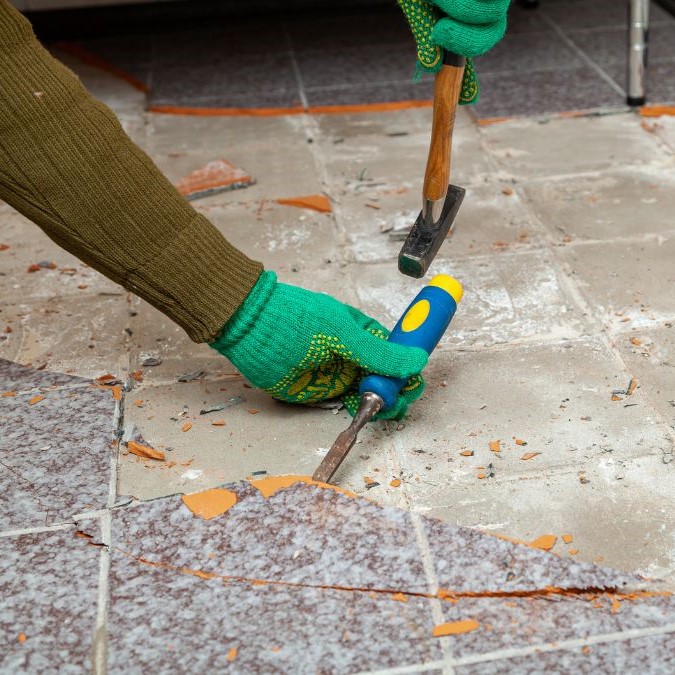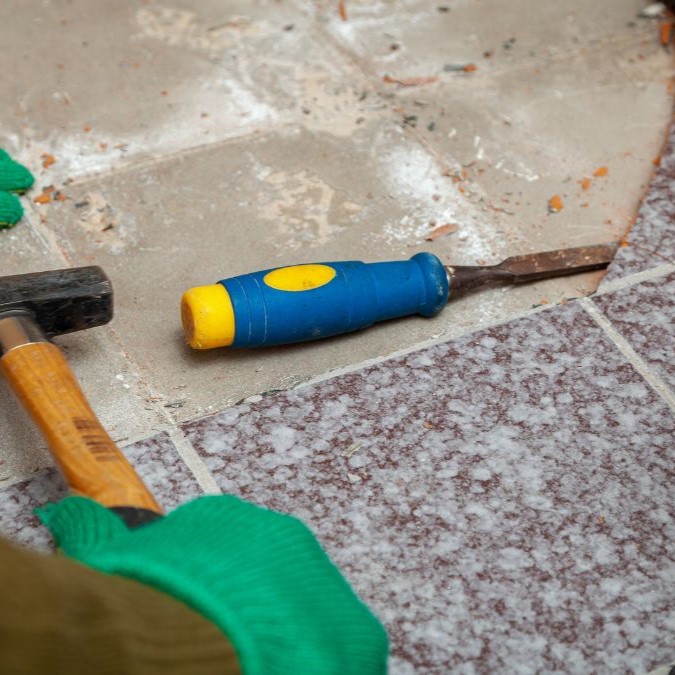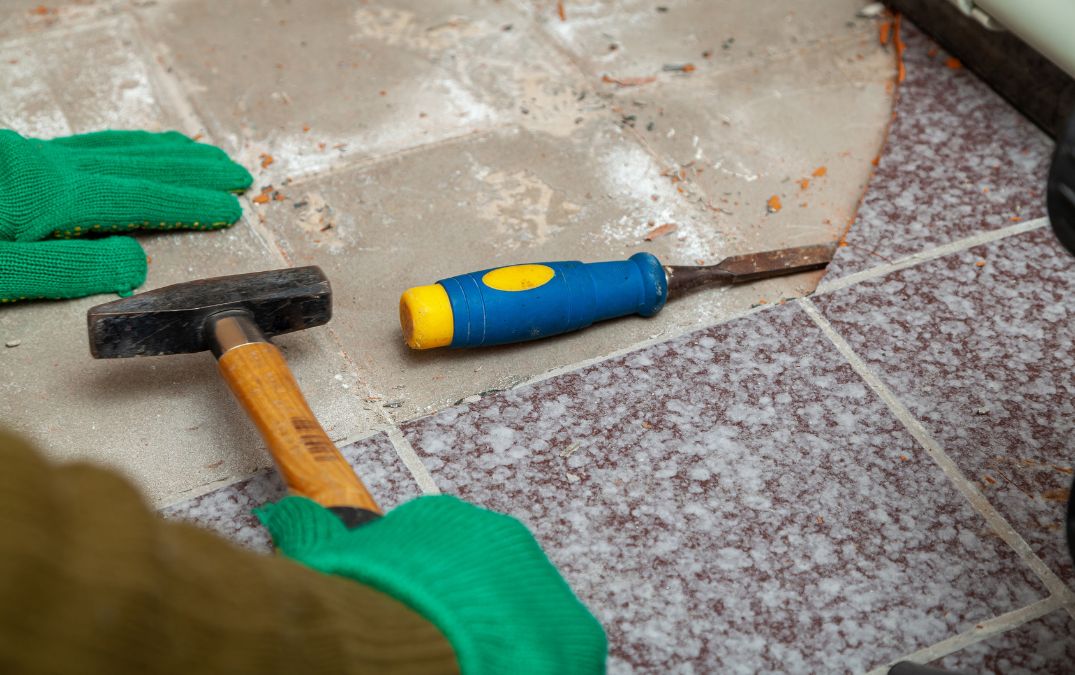Loosening the floor tiles from the concrete
Remove all furniture and any obstacles from the area you’ll be working in. This gives you room to move around and ensures nothing gets damaged in the process. Next, grab some drop cloths and cover any nearby surfaces and fixtures. This prevents dust and debris from settling where it shouldn’t and keeps your space tidy.
Now, it’s time to get into the nitty gritty. Take a utility knife and carefully score the grout lines around each tile. This helps to break the seal and makes the tiles easier to remove. Make sure you get into all the grooves for the best results.
Once you've finishing scoring the grout, you're going to what to start by tapping a chisel under the edge of a tile to loosen it. Be gentle and work carefully to avoid damaging the concrete underneath. It’s a bit like prying a lid off a stubborn jar, a bit of finesse goes a long way. Once the edges are loose, it’s time to lift those tiles. Use a hammer and chisel or a floor scraper to lift and remove the tiles. For those tiles that just don’t want to budge, bring out the big guns; a rotary hammer with a chisel attachment can make short work of the most stubborn tiles.



